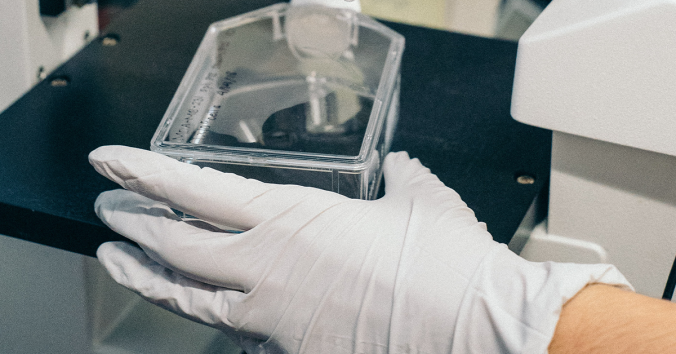Stem cells taken from human embryos very early after fertilization can be grown as embryonic stem cell lines. These embryonic stem cells are called pluripotent, as they can differentiate into virtually all of the body’s cell types (without being able to develop into an individual). The medical interest in embryonic stem cells is related to the possibility of using them to regenerate damaged tissue. One disease one hopes to be able to develop stem cell treatment for is Parkinson’s disease.
In Sweden, it is permitted to use leftover donated embryos from IVF treatment for research purposes. However, not to produce medical products. The path towards possible future treatments is lined with legal and ethical uncertainties. In addition, the moral status of the embryo has been debated for a very long time, without any consensus on the matter being reached.
In this situation, studies of people’s perceptions of the use of human embryonic stem cells for the development of medical treatments become urgent. Recently, the first study of the perceptions of patients, the group that can become recipients, was published. It is an interview study with seventeen patients in Sweden who have Parkinson’s disease. Author is Jennifer Drevin along with six co-authors.
The interviewees were generally positive about using human embryonic stem cells to treat Parkinson’s disease. They did not regard the embryo as a life with human rights, but at the same time they saw the embryo as something special. It was considered that the embryo has great value for the couple who want to become parents and emphasized the importance of the woman’s or the couple’s free and informed consent to donation. As patients, they expressed interest in a treatment that did not limit everyday life through, for example, complicated daily medication. They were interested in better cognitive and communicative abilities and wanted to be more independent: not having to ask family members for support in everyday tasks. The effectiveness of the treatment was considered important and there was concern that stem cell treatment might not be effective enough, or have side effects.
Furthermore, concerns were expressed that donors could be exploited, for example poor and vulnerable groups, and that financial compensation could have negative effects. Allowing donation only of leftover embryos from IVF treatment was considered reassuring, as the main purpose would not be to make money. Finally, there was concern that the pharmaceutical industry would not always prioritize the patient over profit and that expensive stem cell treatments could lead to societal and global injustices. Suspicions that companies will not use embryos ethically were expressed, and some felt that it was more problematic to make a profit on products from embryos than on other medical products. Transparency around the process of developing and using medical stem cell products was considered important.
If you want to see more results, read the study here: Patients’ views on using human embryonic stem cells to treat Parkinson’s disease: an interview study.
It can be difficult to draw general conclusions from the study and the summary above reproduces some of the statements in the interviews. We should, among other things, keep in mind that the interviews were conducted with a small number of patients who themselves have the disease and that the study was conducted in Sweden. The authors emphasize that the study can help clinicians and researchers develop treatments in ways that take into account patients’ needs and concerns. A better understanding of people’s attitudes can also contribute to the public debate and support the development of policy and legislation.

Written by…
Pär Segerdahl, Associate Professor at the Centre for Research Ethics & Bioethics and editor of the Ethics Blog.
Drevin, J., Nyholm, D., Widner, H. et al. Patients’ views on using human embryonic stem cells to treat Parkinson’s disease: an interview study. BMC Med Ethics 23, 102 (2022). https://doi.org/10.1186/s12910-022-00840-6
In dialogue with patients









Recent Comments